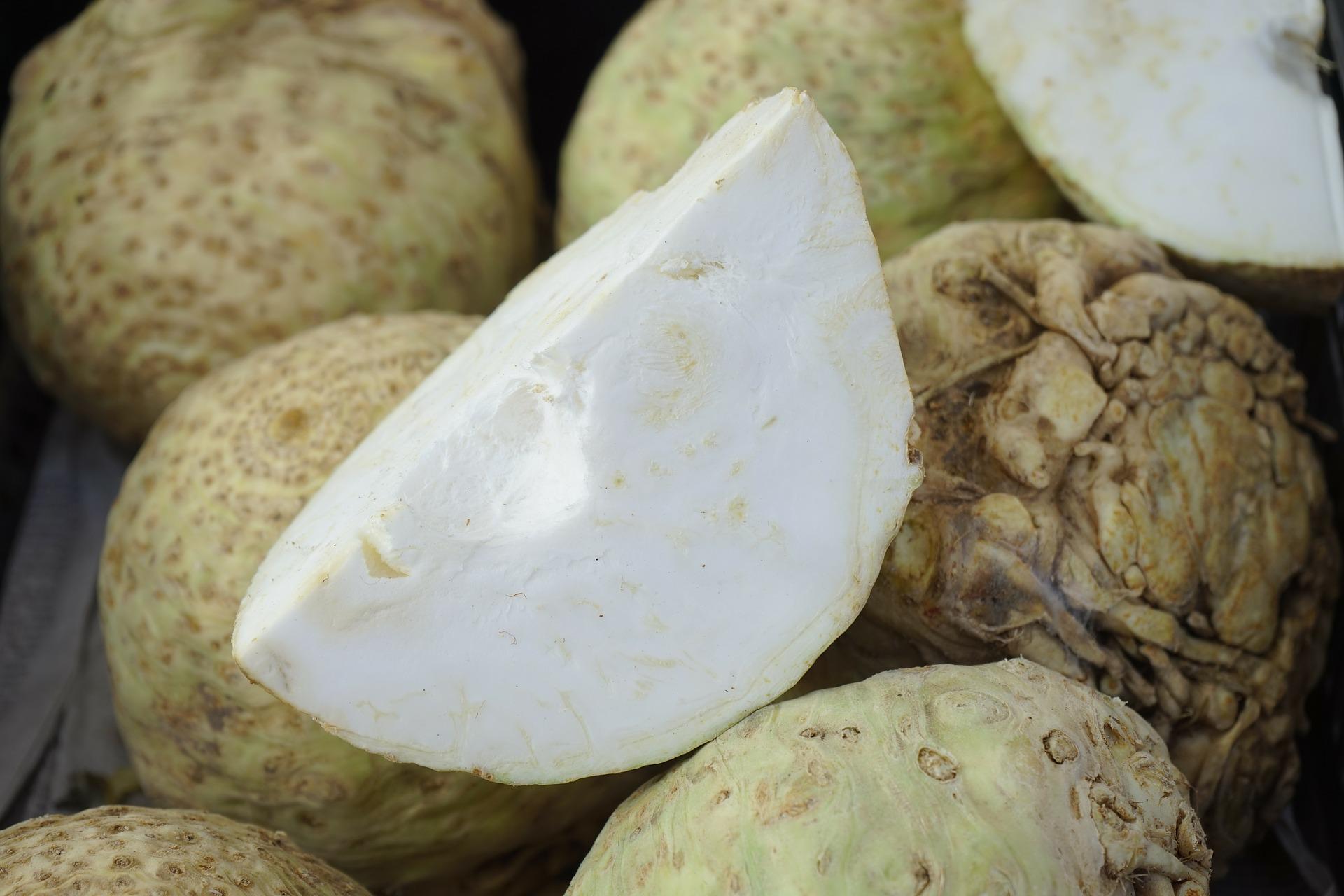Morphological Characteristics of Celery
The swollen root of celery is used as a food product. It consists of the epicotyl (shortened stem), hypocotyl, and part of the true root with lateral rootlets. The root is branched and does not extend deeper than 30 cm. The shape and color of the swollen root vary among different types of celery. For instance, “root celery” has a round or oval root with a larger diameter, while leaf and stalk varieties do not have a swollen root.
On the shortened stem, a rosette of pinnately compound leaves forms, with petioles of varying lengths. Leaf celery has unusable, thin, and hollow petioles, while stalk celery has thick and juicy petioles, and root celery has thinner and more fibrous ones. The leaflets are larger than those of parsley, shiny, smooth, and deeply lobed.
Celery is a biennial plant, developing only vegetative parts in the first year and entering the generative phase in the second year to form reproductive parts. The flowering stem can reach a height of 70-100 cm, branching out and bearing umbels of flowers at the tips.
The fruit is a schizocarp, consisting of two single-seeded segments that separate upon maturity. The seeds are very small, with one gram containing 1,700 to 2,000 seeds.
Conditions for Growth and Development
Celery can germinate at temperatures of 4-5°C. However, these temperatures are avoided during cultivation because young celery plants can vernalize at temperatures of 4-14°C in a very short time (about 10 days), leading to premature bolting and unwanted flowering. Therefore, celery is grown from transplants raised in controlled environments with temperatures maintained above 16°C. The optimal temperature for growing celery, which ensures proper development, is around 18°C.













































